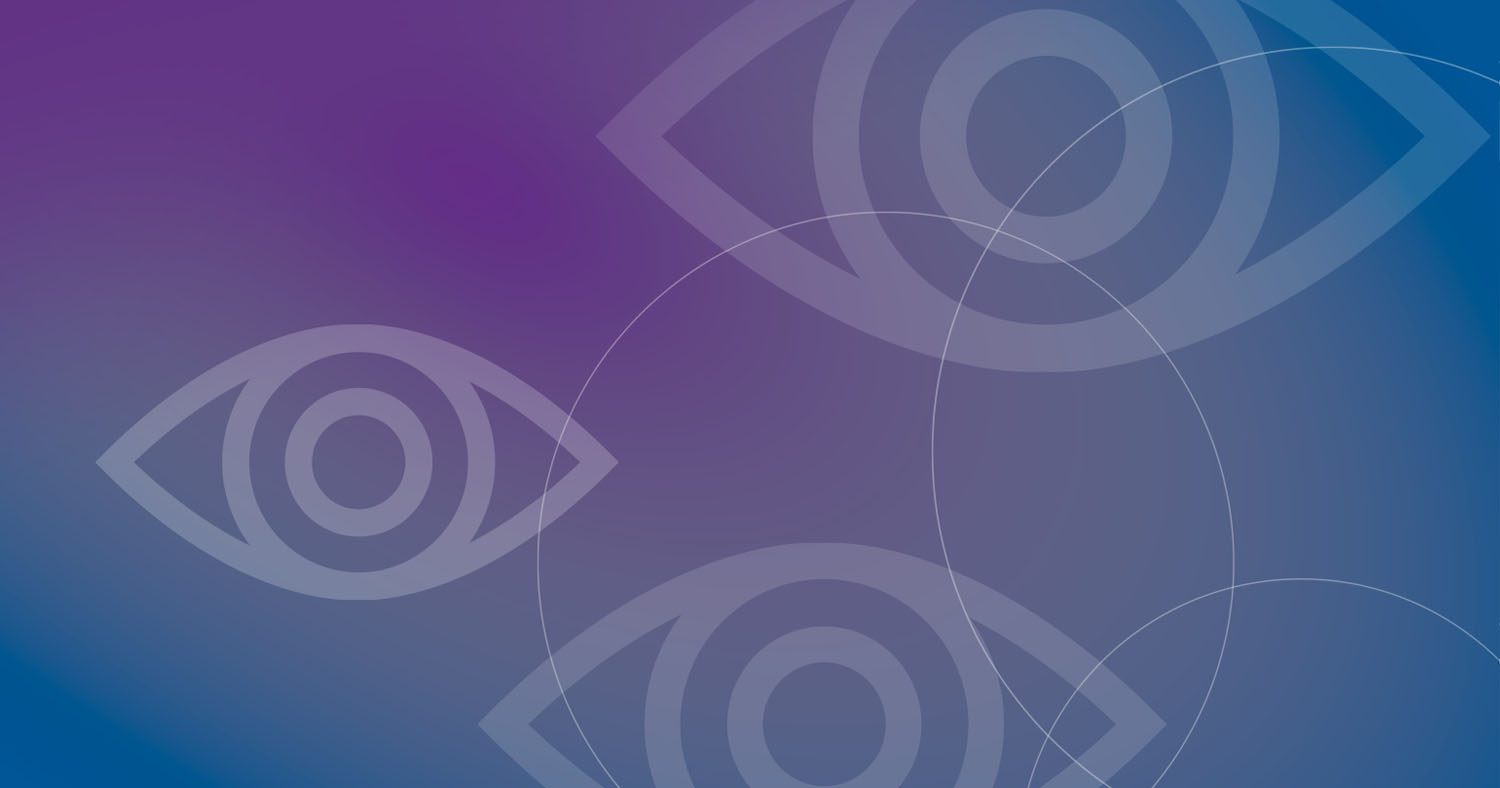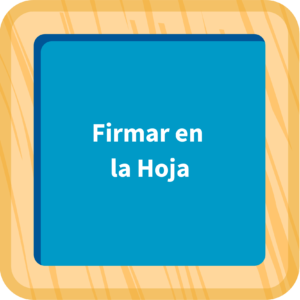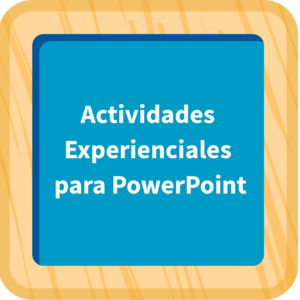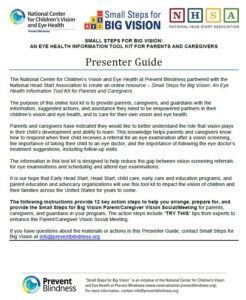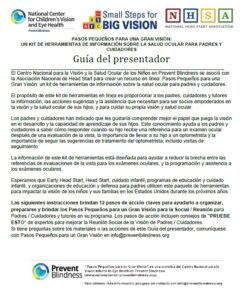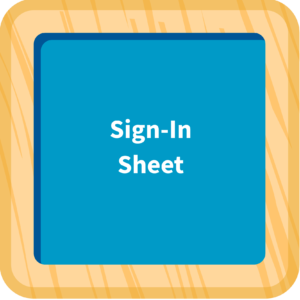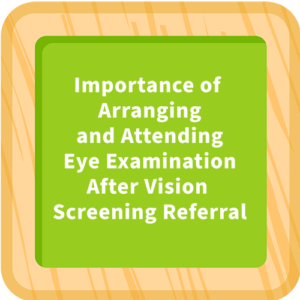
The National Center for Children’s Vision and Eye Health at Prevent Blindness partnered with the National Head Start Association to create an online resource – Small Steps for Big Vision: An Eye Health Information Tool Kit for Parents and Caregivers – to provide parents and caregivers with the information, suggested actions, and assistance they need to be empowered partners in their children’s vision and eye health, and to care for their own vision and eye health.
The tool kit was designed for use by Head Start and Early Head Start programs, as well as any early childhood education and care program.
Small Steps for Big Vision is supported by the Health Resources and Services Administration (HRSA) of the U.S. Department of Health and Human Services (HHS) as part of an award totaling $300,000 with 5% financed with non-governmental sources. The contents are those of the author(s) and do not necessarily represent the official views of, nor an endorsement, by HRSA, HHS, or the U.S. Government. For more information, please visit HRSA.gov.
Parents Need to Know…
A quick guide to parent education resources you won’t want to miss
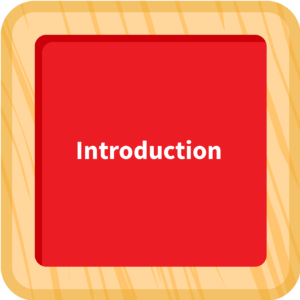
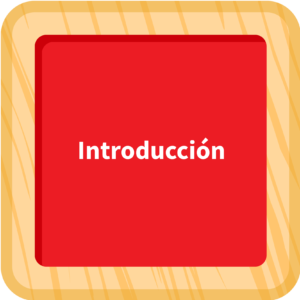
Introduction to Small Steps for Big Vision
The information in this tool kit is designed to help reduce the gap between vision screening referrals for eye examinations and follow-up to eye care. It is our hope that Early Head Start, Head Start, child care, early care and education programs, and parent education and advocacy organizations will use this tool kit to impact the vision of children and their families across the United States for years to come.
Resources to Download:
Recording of Small Steps for Big Vision Webinar, October 22, 2020
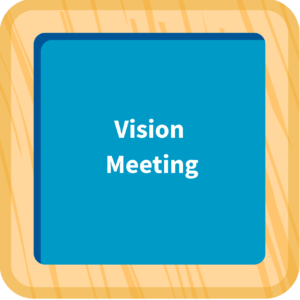
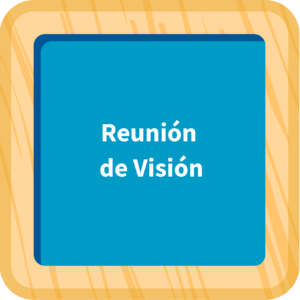
Learn how to lead a vision meeting for parents
Much of the vision screening referral follow-up literature talks about parent education as a way to help reduce the gap between a vision screening referral and a follow-up eye exam.
This section offers materials for you to hold a training session with your parents and caregivers to provide parent education.
Some of you call your training sessions with parents and caregivers “meetings” or “socials” or other names. Whatever the name you use, this section of Small Steps includes materials to hold a training session about common vision disorders in young children; the importance of vision screening; and the importance of arranging and attending an eye examination, following the eye doctor’s treatment plan, and participating in ongoing care.
The scripted PowerPoint also includes information about the importance of parents and caregivers in taking care of their own vision and eye health needs. Visit the section on Parent/Caregiver Comments About the Vision Meeting/Social to see comments and view a video from a parent who attended a vision meeting/social.
This section of Small Steps for Big Vision: An Eye Health Information Tool Kit for Parents and Caregivers includes the following:
- A training manual in both English and Spanish describing how to arrange and conduct a training session for parents and caregivers;
- Invitation templates to share with parents and caregivers;
- Sign-in sheets for your records;
- Handouts to distribute at the session in both English and Spanish, including an evaluation form that we hope you will scan and return to us to help us continually revise this tool kit to meet your needs and the needs of the families you serve;
- Experiential activities to use during the PowerPoint presentation to give parents and caregivers the sense of how their children may see with a vision disorder; and
- A scripted PowerPoint presentation, that includes embedded videos and pronunciations of vision disorders, such as amblyopia, strabismus, hyperopia, myopia, and anisometropia.
If you have questions, contact us at [email protected] with Small Steps and part of your question in the subject line.
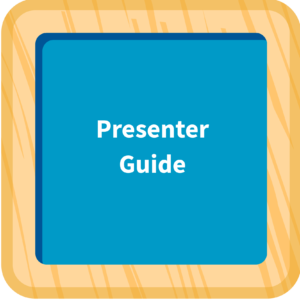
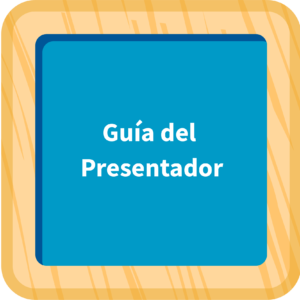
Presenter Guide
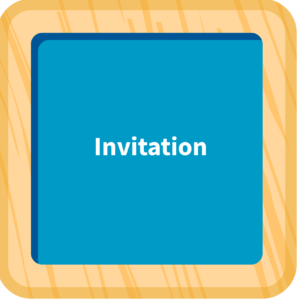
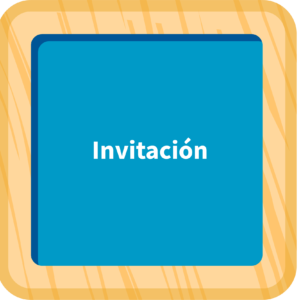
Invitation
Resource to Download
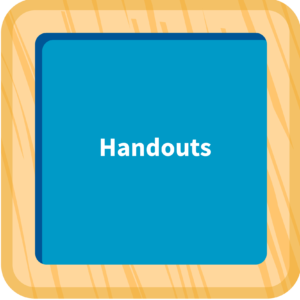
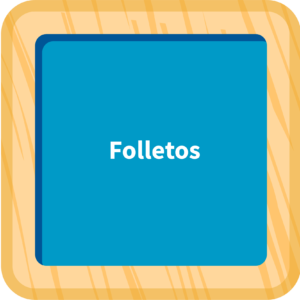
Handouts
Resources to Download
Experiential Activities to Use During the Group Vision “Play Time” Activity Slide
- Some parents/caregivers receive a referral for an eye examination for their children after vision screening but do not arrange and attend an eye exam because they do not think their children have a vision disorder.
- Small Steps for Big Vision provides four activities to help parents/caregivers to better understand how a child with a vision disorder may see their world, especially when parents/caregivers do not think their child has a vision problem.
- Choose one or more activities to use during the Group Vision “Play Time” Activity slide in the Small Steps for Big Vision PowerPoint presentation as part of your Parent/Caregiver Social/Meeting.
Blurred Vision Activity #1
Materials Needed:
- One or two packages of plastic wrap (e.g., Saran Plastic Wrap)
- Number of packages of plastic wrap will depend on the number of parents/caregivers attending the meeting
- Scissors
- Eye chart
- Children’s books for parents/caregivers who do not have a cell phone
- 1 book per parent/caregiver
- Number of books needed will depend on the number of parents/caregivers who do not have a cell phone
- 1 book per parent/caregiver
What to do BEFORE the Social/Meeting:
- Pull plastic wrap from the role about 12 inches in length for each participant.
- Fold the plastic wrap in half, lengthwise, 3 times, for thick, 2-inch strips.
- Distribute one 2-inch strip to each parent/caregiver only when you show the Group Vision “Play Time” Activity slide.
What to do DURING the Group Vision “Play Time” Activity:
DO THIS FIRST
- Distribute plastic wrap strips.
- Explain to parents/caregivers that you are going to pretend to screen their vision so they can experience blurred vision when trying to identify optotypes on the eye chart.
- Hold an eye chart 10 feet from the parents/caregivers.
- Ask parents/caregivers to place the folded plastic strips over their eyes.
- Ask parents/caregivers to close their left eye while keeping the right eye open (strip remains over both eyes).
- Ask parents/caregivers to name or read the last symbol or letter of each line on the right side of the chart from the top line down until they cannot identify the symbol or letter.
- Repeat the process with the right eye closed, left eye open, and ask parents/caregivers to name or read the first symbol or letter of each line on the left side of the chart from the top line down until they cannot identify the symbol or letter.
- (Note: you would never use this occlusion method during an actual vision screening. You are asking parents/caregivers to use the plastic strips and close one eye at a time only for the “Play Time” activity.)
DO THIS SECOND
- Continue holding the eye chart 10 feet away from the parents/caregivers.
- Ask parents/caregivers to pull the plastic wrap away from their eyes.
- Show the 20/32 line, explaining they should be able to correctly name at least 3 of the 5 optotypes on the 20/32 line if they are aged 6 years and older, according to national guidelines.
- Ask parents/caregivers to cover their eyes with the plastic wrap and, with both eyes open, name or read the 20/32 line on the eye chart.
DO THIS THIRD
- Ask parents/caregivers to do the following:
- Pull the plastic strips away from their eyes and place the strips near them to use during this part of the activity.
- Get out their cell phone or choose a book.
- Pull up a text message or a photograph on the screen of their cell phone or open the child’s book to a random page.
- Cover their eyes with the folded plastic strip.
- Close their left eye, while keeping the right eye open, and silently read the text message, look at the picture, or silently read the words on a page in the book.
- Close their right eye, while keeping the left eye open, and silently read the same text message, look at the same picture, or silently read the words on the same page of the book.
- Remove the plastic strip from their eyes and place it on the table in front of them or, for safety reasons, give the plastic strips to you if babies or children are nearby.
DISCUSSION AFTER THE 3 ACTIVITIES
Move to the “Talking About ‘Play Time’ – Group Vision Activity” slide.
- Ask parents/caregivers these questions:
- Was it easy or difficult to see clearly?
- Were you uncomfortable or frustrated as you tried to see clearly?
- How would blurred vision impact your daily activities?
- How might blurred vision impact your children’s learning and daily activities?
- What could parents/caregivers do to help ensure they can see clearly? (You want to receive answers about going to an eye doctor, receiving a treatment plan [such as wearing prescription glasses], following the treatment plan, and returning to the eye doctor for follow-up visits. If you do not receive these answers, provide these answers as suggestions.)
- What could parents/caregivers do to help ensure their children can see clearly? (You want to receive answers about taking their child to an eye doctor if they receive a vision screening referral, following eye doctor’s treatment suggestions [such as wearing prescription glasses], following the treatment plan, and taking their child to the eye doctor for follow-up visits. If you do not receive these answers, provide these answers as suggestions.)
DO THIS AFTER DISCUSSION AND BEFORE MOVING TO NEXT SLIDE
- Collect plastic strips after you complete the activity (if you did not collect the plastic strips before moving to the discussion slide).
- Immediately dispose of plastic strips, ensuring children have no access to the plastic wrap strips.
Blurred Vision Activity #2 – Vision Simulator Glasses (two sets of glasses for each participant with an opening for the right eye in one set and an opening for the left eye in the other set)
Materials Needed:
- Overall Blur glasses. (One vendor – Good-Lite: https://www.good-lite.com/Details.cfm?ProdID=766&category=27&Secondary=110 Product # 200766)
- Eye chart
- Children’s books for parents/caregivers who do not have a cell phone
What to do DURING the Group Vision “Play Time” Activity:
- All parents/caregivers put on a set of simulator glasses.
- If parents/caregivers are wearing prescription glasses, parents/caregivers place simulator glasses over the prescription glasses.
- Hold the eye chart 10 feet from parents/caregivers.
- Ask parents/caregivers, with both eyes open, to read the last optotype on the right side of the chart beginning with line 20/50 down to 20/20.
- Next, ask parents/caregivers to read a text message from their mobile phone or text from a random page in a children’s book.
- Ask parents/caregivers if they are having difficulty seeing clearly.
- Discuss how blurred vision could impact their children’s learning and daily activities.
- Discuss what parents/caregivers could do to help ensure they can see clearly. (You want to receive answers about going to an eye doctor, receiving a treatment plan [such as wearing prescription glasses], following the treatment plan, and returning to the eye doctor for follow-up visits. If you do not receive these answers, provide these answers as suggestions.)
- Discuss what parents/caregivers could do to help ensure their children see clearly. (You want to receive answers about taking their child to an eye doctor if they receive a vision screening referral, following eye doctor’s treatment suggestions [such as wearing prescription glasses], following the treatment plan, and taking their child to the eye doctor for follow-up visits. If you do not receive these answers, provide these answers as suggestions.)
Blurred Vision Activity #3 – Make Your Own Occluder Glasses
Materials Needed: –
- Foam core sheets in different colors or heavyweight poster board in different colors
- A pair of eyeglasses or sunglasses to use as template OR glasses template from page 6
- Non-glare sheet protector (NOT glossy)
- If you cannot find matte sheet protectors locally, find them here: https://www.amazon.com/Samsill-Non-Glare-Standard-Protectors-Reinforced/dp/B07732Z4RQ/ref=sr_1_6?crid=146U9UWWFB9R5&dchild=1&keywords=matte+sheet+protectors+8.5+x+11&qid=1592225526&sprefix=matte+sheet%2Caps%2C149&sr=8-6
- Craft sticks
- Scissors
- Glue gun (if using foam core sheets) or glue stick (if using heavyweight poster board)
- Pencil
- Eye chart
What to do BEFORE the Social/Meeting:
- Using the eyeglasses or sunglasses, trace around 1 set of glasses with a pencil on the foam core sheet or heavyweight poster board.
- Cut along the tracing lines around the glasses.
- Cut out a circle from both sides of the foam core sheet or heavyweight poster board “glasses” where lenses would be in regular glasses.
- Cut out one circle from a non-glare sheet protector to cover one of the open circles on each set of “glasses” (non-glare sheet protector sheet circles will be slightly larger than the open holes in each set of glasses).
- Glue the non-glare sheet protector circles to one open circle inside each set of glasses.
- Allow sufficient time for glue to dry.
- Glue a craft stick at one of the sides of the frame so parents can hold the glasses against their eyes.
- Allow sufficient time for glue to dry.
- Distribute the glasses when you show the Group Vision “Play Time” Activity slide.
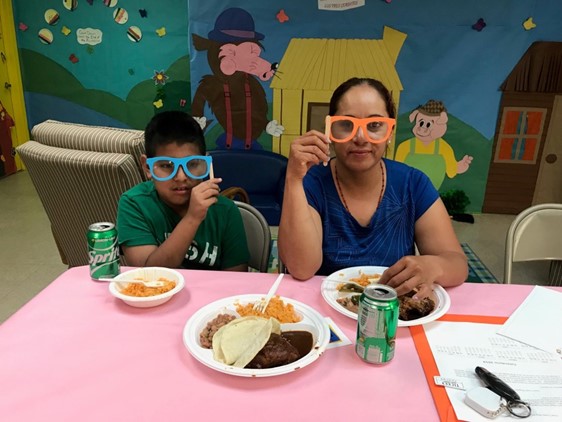
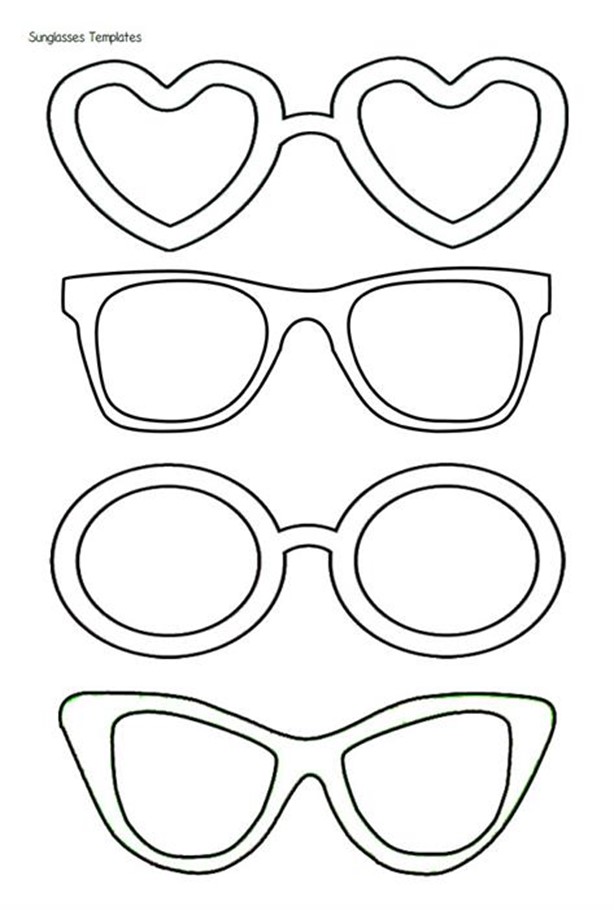
What to do DURING the Group Vision “Play Time” Activity:
- Parents/caregivers may do this activity either with their prescription glasses on or off.
- If glasses stay on, place glasses over the prescription glasses.
- Hold the eye chart 10 feet from parents/caregivers.
- Ask parents/caregivers to cover their left eye with the “glasses” and read the last optotype on the right side of the chart beginning with line 20/50 down to 20/20.
- Turn the glasses over so the right eye is covered.
- Ask parents/caregivers to read the first optotype on the left side of the chart beginning with line 20/50 down to 20/20.
- Ask parents/caregivers if they are having difficulty seeing clearly.
- Discuss how blurred vision could impact their children’s learning and daily activities.
- Discuss what parents/caregivers could do to help ensure they can see the eye chart clearly. (You want to receive answers about going to an eye doctor, receiving a treatment plan [such as wearing prescription glasses], following the treatment plan, and returning to the eye doctor for follow-up visits. If you do not receive these answers, provide these answers as suggestions.)
- Discuss what parents/caregivers could do to help ensure their children see the eye chart clearly. (You want to receive answers about taking their child to an eye doctor if they receive a vision screening referral, following eye doctor’s treatment suggestions [such as wearing prescription glasses], following the treatment plan, and taking their child to the eye doctor for follow-up visits. If you do not receive these answers, provide these answers as suggestions.)
Blurred Vision Activity #4 – Role Play (this activity depends on the number of attendees and available eye charts)
Materials Needed:
- Homemade “occluder glasses” from Activity 3.
- If you do not have homemade occluder glasses, parents/guardians may cover each eye with their hands cupped (you would NEVER use hands to cover the eyes during actual screening for participants of any age).
- Distance Eye charts
What to do DURING the Group Vision “Play Time” Activity:
- If using homemade occluder glasses, give one set to each participant.
- Divide parents/caregivers in pairs or groups to share eye charts, depending on the number of eye charts you have available.
- Give each pair or group an eye chart.
- Ask one parent/caregiver to be the “screener” and the other to be the “child” being screened.
- Allow 10 feet between the chart and the “child” being screened.
- Depending on the number of “screener” and “child teams”, you can either measure 10-foot “lanes” with masking tape before the social/meeting or approximate the 10-foot distance during the social/meeting.
- Ask each “screener” to screen vision of the “child”, one eye at a time beginning with the right eye open and the left eye covered.
- Ask the “child” to read each letter or symbol at the end of each line on the right side of the chart.
- Start with the top line and name each symbol or letter until the “child” cannot name a symbol or letter.
- Turn occluder glasses around to show right eye closed and left eye open or ask “child” to cover the right eye with a cupped left hand.
- Ask the “child” to read each letter or symbol at the beginning of each line on the left side of the chart until they cannot name the letter or symbol.
- Switch roles and follow the same process.
- Ask parents/caregivers to return to their seats.
- Show the 20/32 line, explaining they should be able to correctly name at least 3 of the 5 optotypes on the 20/32 line.
- Discuss their challenges to seeing the 20/32 line clearly.
- Discuss how blurred vision could impact their children’s learning and daily activities.
- Discuss what parents/caregivers could do to help ensure they can see the eye chart clearly. (You want to receive answers about taking their child to an eye doctor if they receive a vision screening referral, following eye doctor’s treatment suggestions [such as wearing prescription glasses], following the treatment plan, and taking their child to the eye doctor for follow-up visits. If you do not receive these answers, provide these answers as suggestions.)
- Discuss what parents/caregivers could do to help ensure their children see the eye chart clearly. (You want to receive answers about going to an eye doctor, receiving a treatment plan [such as wearing prescription glasses], following the treatment plan, and returning to the eye doctor for follow-up visits. If you do not receive these answers, provide these answers as suggestions.)
4 Opciones de actividades experimentales para usar durante la actividad de visión grupal de “tiempo de juego”
- Algunos padres / cuidadores reciben una referencia para un examen ocular de sus hijos después de la evaluación de la vista, pero no organizan ni asisten a un examen ocular porque no creen que sus hijos tengan un trastorno ocular.
- Pasos pequeños para un gran visión ofrece cuatro actividades para ayudar a los padres / cuidadores a comprender mejor cómo un niño con un trastorno ocular puede ver su mundo, especialmente cuando los padres / cuidadores no creen que su hijo tenga un problema de visión.
- Elija una o más actividades para usar durante la diapositiva de la actividad “Tiempo de juego” de visión grupal en la presentación de PowerPoint de pasos pequeños para un gran visión como parte de su reunión / reunión social de padres / cuidadores.
Actividad de visión borrosa #1
Materiales necesitados:
- Uno o dos paquetes de envoltura de plástico (por ejemplo, envoltura de plástico Saran)
- La cantidad de paquetes de envoltura de plástico dependerá de la cantidad de padres / cuidadores que asistan a la reunión
- Tijeras
- Tabla de visión ocular
- Libros para niños para padres / cuidadores que no tienen teléfono celular
- 1 libro por cada padre/cuidador
- La cantidad de libros necesarios dependerá de la cantidad de padres / cuidadores que no tengan un teléfono celular
Qué hacer ANTES de la reunión social:
- Saque una envoltura de plástico de aproximadamente 12 pulgadas de largo para cada participante.
- Dobla la envoltura de plástico por la mitad, a lo largo, 3 veces, para obtener tiras gruesas de 2 pulgadas.
- Distribuya una tira de 2 pulgadas a cada padre / cuidador solo cuando muestre la diapositiva de actividad “Tiempo de juego” de visión grupal.
Qué hacer DURANTE la actividad de “Tiempo de juego” de la visión grupal:
HAGA ESTO PRIMERO
- Distribuya tiras de envoltura de plástico.
- Explique a los padres / cuidadores que va a fingir que examinarán su visión para que puedan experimentar visión borrosa al intentar identificar los optotipos en la tabla de visión ocular.
- Mantenga una tabla de visión ocular a 10 pies de los padres / cuidadores.
- Pídales a los padres / cuidadores que coloquen las tiras de plástico dobladas sobre sus ojos.
- Pídales a los padres / cuidadores que cierren su ojo izquierdo mientras mantienen abierto el ojo derecho (queda una tira sobre ambos ojos).
- Pida a los padres / cuidadores que nombren o lean el último símbolo o letra de cada línea en el lado derecho de la tabla desde la línea superior hacia abajo hasta que no puedan identificar el símbolo o la letra.
- Repita el proceso con el ojo derecho cerrado, el ojo izquierdo abierto y pida a los padres / cuidadores que nombren o lean el primer símbolo o letra de cada línea en el lado izquierdo de la tabla desde la línea superior hacia abajo hasta que no puedan identificar el símbolo o letra.
- (Nota: nunca usaría este método de oclusión durante un examen de visión real. Está pidiendo a los padres / cuidadores que usen las tiras de plástico y cierren un ojo a la vez solo para la actividad “Tiempo de juego”).
HAGA ESTE SEGUNDO
- Continúe sosteniendo la tabla de visión ocular a 10 pies de distancia de los padres / cuidadores.
- Pídales a los padres / cuidadores que retiren la envoltura de plástico de sus ojos.
- Muestre la línea 20/32, explicando que deberían poder nombrar correctamente al menos 3 de los 5 optotipos en la línea 20/32 si son mayores de 6 años, de acuerdo con las pautas nacionales.
- Pídales a los padres / cuidadores que se cubran los ojos con una envoltura de plástico y, con ambos ojos abiertos, nombren o lean la línea 20/32 en la tabla de visión ocular.
HAZ ESTO TERCERO
- Pídales a los padres / cuidadores que hagan lo siguiente:
- Separe las tiras de plástico de sus ojos y colóquelas cerca de ellas para usarlas durante esta parte de la actividad.
- Saca su teléfono celular o elige un libro.
- Abra un mensaje de texto o una fotografía en la pantalla de su teléfono celular, o abra el libro del niño en una página aleatoria.
- Cubra sus ojos con la tira de plástico doblada.
- Cierre su ojo izquierdo, mientras mantiene abierto el ojo derecho, y lea en silencio el mensaje de texto, mire la imagen o lea en silencio las palabras en una página del libro.
- Cierre su ojo derecho, mientras mantiene abierto el ojo izquierdo, y lea en silencio el mismo mensaje de texto, mire la misma imagen o lea en silencio las palabras en la misma página del libro.
- Retire la tira de plástico de sus ojos y colóquela en la mesa frente a ellos o, por razones de seguridad, entregue las tiras de plástico si hay bebés o niños cerca.
DISCUSIÓN DESPUÉS DE LAS 3 ACTIVIDADES
Vaya a la diapositiva “Hablar sobre‘ Tiempo de juego ’- Actividad de visión grupal”.
- Haga a los padres / cuidadores estas preguntas:
- ¿Fue fácil o difícil ver con claridad?
- ¿Se sintió incómodo o frustrado cuando trató de ver con claridad?
- ¿Cómo afectaría la visión borrosa a sus actividades diarias?
- ¿Cómo podría afectar la visión borrosa el aprendizaje y las actividades diarias de sus hijos?
- ¿Qué podrían hacer los padres / cuidadores para ayudar a garantizar que puedan ver con claridad? (Desea recibir respuestas acerca de ir a un optometrista, recibir un plan de tratamiento [como usar anteojos recetados], seguir el plan de tratamiento y regresar al optometrista para visitas de seguimiento. Si no recibe estas respuestas, proporcione estas respuestas como sugerencias.)
- ¿Qué podrían hacer los padres / cuidadores para ayudar a garantizar que sus hijos puedan ver con claridad? (Desea recibir respuestas sobre cómo llevar a su hijo a un optometrista si recibe una referencia para una evaluación de la vista, seguir las sugerencias de tratamiento del optometrista [como usar anteojos recetados], seguir el plan de tratamiento y llevar a su hijo al optometrista para que lo siga visitas de seguimiento. Si no recibe estas respuestas, proporcione estas respuestas como sugerencias).
HAZ ESTO DESPUÉS DE LA DISCUSIÓN Y ANTES DE PASAR A LA PRÓXIMA DIAPOSITIVA
- Recoja tiras de plástico después de completar la actividad (si no recolectó las tiras de plástico antes de pasar a la diapositiva de discusión).
- Deseche inmediatamente las tiras de plástico, asegurando que los niños no tengan acceso a las tiras de plástico.
Actividad de visión borrosa # 2 – Gafas de simulador de visión (dos para cada participante con una abertura para el ojo derecho en una y una abertura para el ojo izquierdo en la otra)
Materiales necesitados:
- Gafas borrosas en general. (Un proveedor – Good-Lite: https://www.good-lite.com/Details.cfm?ProdID=766&category=27&Secondary=110 Producto # 200766)
- Tabla de visión ocular
- Libros infantiles para padres / cuidadores que no tienen teléfono celular
Qué hacer DURANTE la actividad de “Tiempo de juego” de la visión grupal:
- Todos los padres / cuidadores se ponen unas gafas simuladoras.
- Si los padres / cuidadores usan anteojos recetados, los padres / cuidadores colocan anteojos simuladores sobre los anteojos recetados.
- Mantenga la tabla de visión ocular a 10 pies de los padres / cuidadores.
- Pida a los padres / cuidadores, con ambos ojos abiertos, que lean el último optotipo en el lado derecho de la tabla que comienza con la línea 20/50 hasta el 20/20.
- Luego, pídales a los padres / cuidadores que lean un mensaje de texto desde su teléfono móvil o un texto de una página aleatoria en un libro para niños.
- Pregunte a los padres / cuidadores si tienen dificultades para ver con claridad.
- Discuta cómo la visión borrosa podría afectar el aprendizaje y las actividades diarias de sus hijos.
- Discuta lo que los padres / cuidadores podrían hacer para ayudar a asegurar que puedan ver con claridad. (Desea recibir respuestas acerca de ir a un optometrista, recibir un plan de tratamiento [como usar anteojos recetados], seguir el plan de tratamiento y regresar al optometrista para visitas de seguimiento. Si no recibe estas respuestas, proporcione estas respuestas como sugerencias.)
- Discuta lo que los padres / cuidadores podrían hacer para ayudar a asegurar que sus hijos vean claramente. (Desea recibir respuestas sobre cómo llevar a su hijo a un optometrista si recibe una derivación para la evaluación de la vista, siguiendo las sugerencias de tratamiento del optometrista [como usar anteojos recetados], siguiendo el plan de tratamiento y llevando a su hijo al optometrista para su visita de seguimiento. Si no recibe estas respuestas, proporcione estas respuestas como sugerencias).
Visión borrosa Actividad # 3 – Haga sus propias gafas de oclusor
Materiales necesitados:
- Hojas de núcleo de espuma en diferentes colores o cartulina gruesa en diferentes colores
- Un par de anteojos o gafas de sol para usar como plantilla O plantilla de anteojos de la página 6
- Protector de hoja antideslumbrante (NO brillante)
- Si no puede encontrar protectores de hoja mate a nivel local, encuéntrelos aquí: https://www.amazon.com/Samsill-Non-Glare-Standard-Protectors-Reinforced/dp/B07732Z4RQ/ref=sr_1_6?crid=146U9UWWFB9R5&dchild=1&keyword=matte+hoja+protectores+8.5+x+11&qid =1592225526 & sprefix=mate+hoja% 2Caps%2C149&sr=8-6
- Palos artesanales
- tijeras
- Pistola de pegamento (si usa láminas de núcleo de espuma) o barra de pegamento (si usa cartulina de peso pesado)
- Lápiz
- Tabla de visión ocular
Qué hacer ANTES de la reunión social:
- Usando los anteojos o las gafas de sol, trace alrededor de 1 par de anteojos con un lápiz en la lámina central de espuma o cartulina de peso pesado.
- Corte a lo largo de las líneas de trazado alrededor de las gafas.
- Recorte un círculo a ambos lados de la lámina central de espuma o “anteojos” de cartulina de peso pesado donde los lentes estarían en anteojos normales.
- Recorte un círculo de un protector de lámina antideslumbrante para cubrir uno de los círculos abiertos en cada conjunto de “gafas” (los círculos de lámina protectora de lámina antideslumbrante serán ligeramente más grandes que los orificios abiertos en cada conjunto de gafas).
- Pegue los círculos protectores de la lámina antideslumbrante a un círculo abierto dentro de cada par de gafas.
- Deje suficiente tiempo para que se seque el pegamento.
- Pegue un palo artesanal en uno de los lados del marco para que los padres puedan sostener los anteojos contra sus ojos.
- Deje suficiente tiempo para que se seque el pegamento.
- Distribuya los anteojos cuando muestre la diapositiva de actividad “Tiempo de juego” de visión grupal.


Qué hacer DURANTE la actividad de “Tiempo de juego” de la visión grupal:
- Los padres / cuidadores pueden realizar esta actividad con sus anteojos recetados prendidos o apagados.
- Si las gafas permanecen, colóquelas sobre las gafas recetadas.
- Mantenga la tabla de visión a 10 pies de los padres / cuidadores.
- Pídales a los padres / cuidadores que cubran su ojo izquierdo con los “anteojos” y lean el último optotipo en el lado derecho de la tabla que comienza con la línea 20/50 hasta el 20/20.
- Voltee las gafas para cubrir el ojo derecho.
- Pídales a los padres / cuidadores que lean el primer optotipo en el lado izquierdo del cuadro que comienza con la línea 20/50 hasta el 20/20.
- Pregunte a los padres / cuidadores si tienen dificultades para ver con claridad.
- Discuta cómo la visión borrosa podría afectar el aprendizaje y las actividades diarias de sus hijos.
- Discuta lo que los padres / cuidadores podrían hacer para ayudar a asegurar que puedan ver claramente la tabla de visión ocular. (Desea recibir respuestas acerca de ir a un optometrista, recibir un plan de tratamiento [como usar anteojos recetados], seguir el plan de tratamiento y regresar al optometrista para visitas de seguimiento. Si no recibe estas respuestas, proporcione estas respuestas como sugerencias)
- Discuta lo que los padres / cuidadores podrían hacer para ayudar a asegurar que sus hijos vean claramente la tabla optométrica. (Desea recibir respuestas sobre cómo llevar a su hijo a un optometrista si recibe una referencia para la evaluación de la vista, seguir las sugerencias de tratamiento del optometrista [como usar anteojos recetados], seguir el plan de tratamiento y llevar a su hijo al optometrista para la visita de seguimiento. Si no recibe estas respuestas, proporcione estas respuestas como sugerencias).
Actividad de visión borrosa # 4 – Juego de roles (esta actividad depende de la cantidad de asistentes y gráficos disponibles)
Materiales necesitados:
- “Gafas de oclusor” caseras de la Actividad 3.
- Si no tiene anteojos oclusores caseros, los padres / cuidadores pueden cubrir cada ojo con las manos ahuecadas (NUNCA usaría las manos para cubrir los ojos durante el examen real para participantes de cualquier edad).
- Tablas de ojo para distancia
Qué hacer DURANTE la actividad de “Tiempo de juego” de la visión grupal:
- Si usa gafas oclusores caseros, dele un par a cada participante.
- Divida a los padres / cuidadores en parejas o grupos para compartir gráficos, dependiendo de la cantidad de gráficos que tenga disponibles.
- Dé a cada par o grupo una tabla de visión ocular.
- Pídale a uno de los padres / cuidadores que sea el “evaluador” y al otro que sea el “niño” que se está evaluando.
- Deje 10 pies entre la tabla y el “niño” que se está examinando.
- Dependiendo de la cantidad de “equipo de control” y “equipos de niños”, puede medir “carriles” de 10 pies con cinta adhesiva antes de la reunión social / o aproximar la distancia de 10 pies durante la reunión / social.
- Pídale a cada “examinador” que proyecte la visión del “niño”, un ojo a la vez, comenzando con el ojo derecho abierto y el ojo izquierdo cubierto.
- Pídale al “niño” que lea cada letra o símbolo al final de cada línea en el lado derecho de la tabla.
- Comience con la línea superior y nombre cada símbolo o letra hasta que el “niño” no pueda nombrar un símbolo o letra.
- Gire los anteojos oclusores para mostrar el ojo derecho cerrado y el ojo izquierdo abierto o pídale al “niño” que cubra el ojo derecho con una mano izquierda ahuecada.
- Pídale al “niño” que lea cada letra o símbolo al comienzo de cada línea en el lado izquierdo de la tabla hasta que no puedan nombrar la letra o el símbolo.
- Cambia de roles y sigue el mismo proceso.
- Pídales a los padres / cuidadores que regresen a sus asientos.
- Muestre la línea 20/32, explicando que deberían poder nombrar correctamente al menos 3 de los 5 optotipos en la línea 20/32.
- Discuta sus desafíos para ver la línea 20/32 claramente.
- Discuta cómo la visión borrosa podría afectar el aprendizaje y las actividades diarias de sus hijos.
- Discuta lo que los padres / cuidadores podrían hacer para ayudar a asegurar que puedan ver claramente la tabla de visión ocular. (Desea recibir respuestas sobre cómo llevar a su hijo a un optometrista si recibe una referencia para el examen de la vista, seguir las sugerencias de tratamiento del optometrista [como usar anteojos recetados], seguir el plan de tratamiento y llevar a su hijo al optometrista para visitas de seguimiento. Si no recibe estas respuestas, proporcione estas respuestas como sugerencias).
- Discuta lo que los padres / cuidadores podrían hacer para ayudar a asegurar que sus hijos vean claramente la tabla optométrica. (Desea recibir respuestas acerca de ir a un oculista, recibir un plan de tratamiento [como usar anteojos recetados], seguir el plan de tratamiento y regresar al optometrista para visitas de seguimiento. Si no recibe estas respuestas, proporcione estas respuestas como sugerencias.)

INSTRUCTIONS FOR SHOWING POWERPOINT AT VISION MEETING/SOCIAL
To download to your laptop or PC and use either the English, Spanish, or a combination of English and Spanish PowerPoint slides:
Vision Meeting Presentations (Click Here to Download from Google Docs)
-Right click on the PowerPoint version you want to use and select “Download”
-Click on “Open”
-Go to “Slide Show” view to begin animated PowerPoint slides.
(You can use the PDF PowerPoint version, which has slides and talking points, when presenting.)
Vision Meeting English Slides and Notes
Vision Meeting Spanish Slides and Notes
Vision Meeting Combined Spanish and English Presentations with Notes
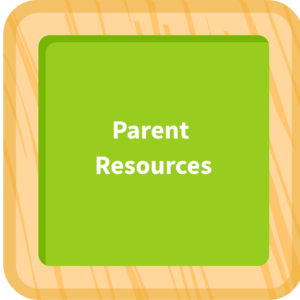
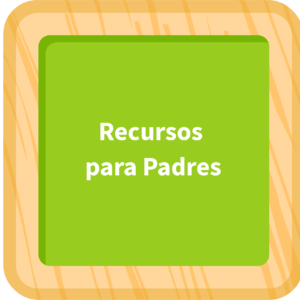
Learn about good vision for your child
Up to 1 in 17 young children, 1 in 5 Head Start children, and an estimated 1 in 4 or 5 school-aged children have a vision disorder that can lead to permanent vision disorders if not found and treated early.
Too often children do not receive an eye examination after a vision screening referral because parents and caregivers do not know their children have a vision disorder. And, many parents and caregivers do not know about the importance of good vision for their children’s development and learning.
We created this online tool kit the National Head Start Association to give you lots of information about the importance of taking care of your child’s vision . . . and for taking care of your own vision.
It is our hope that if you have more information about vision, and the importance of good vision, you will help make sure your child receives an eye examination by an eye care doctor, treatment, such as prescription glasses, and ongoing care.
Small Steps for Big Vision includes many resources about vision screening, what will happen at the eye examination, where to find eye doctors, and how to pay for the eye exam and glasses, if needed. Resources also include frequently asked questions about vision and eye health.
This section of Small Steps for Big Vision also includes resources for health managers, school nurses, and others to run a special meeting or social that includes a short PowerPoint presentation and fun games.
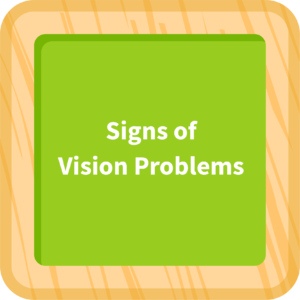
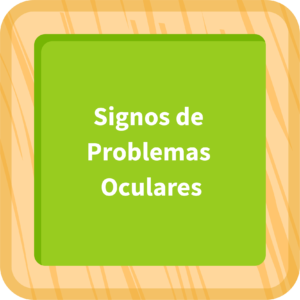
Signs & Symptoms of Vision Problems
This section of Small Steps for Big Vision gives you information about the signs and symptoms of vision problems.
You will see:
- A game-like poster of 18 vision development milestones from birth to the 1st birthday;
- A guide to vision health for your newborn, infant, and toddler;
- Common early childhood vision disorders, including links to videos, webcasts, and a handout;
- A handout of 8 questions from parents about myopia (nearsightedness);
- Tips for moving from vision screening to the eye examination by an eye doctor if your child does not pass vision screening;
- A document with signs of possible vision problems in children;
- A glossary listing common vision and eye words and definitions;
- A checklist you can complete about signs and possible vision problems in children, with information about making an appointment with an eye doctor for an eye examination, if needed; and
- Risk factors for vision problems in children.
Some classroom behaviors are related to poor vision. See the information about vision and classroom behaviors. Some research shows an association between poor vision and learning. See the information about vision and learning.
Resources
Additional Resources (Spanish)
18 Hitos del Desarrollo Ocular Desde el Nacimiento Hasta el Primer Cumpleaños del Bebé
Signos de problemas de visión posibles en niños
Dele a su hijo la mejor visión posible
Factores de riesgo para problemas de vision
Respuestas a 8 Preguntas de los Padres Sobre la Miopía
Un glosario de términos relacionados con los ojos y la vista
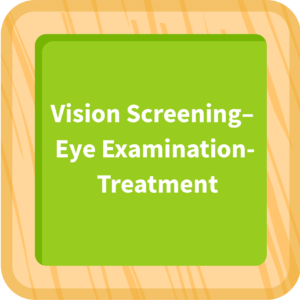
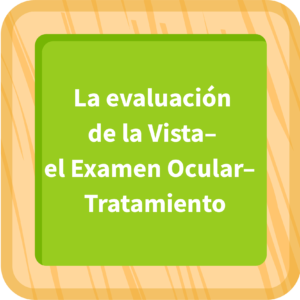
Vision Screenings, Eye Examinations, and Treatment
When your child does not pass vision screening in the Head Start or school classroom, or in other community settings, you will receive a referral for an eye examination from an eye doctor. This page gives you information about the importance of following up with an eye doctor when your child does not pass vision screening.
To understand the steps along the pathway between vision screening and the eye exam, look at “10 Small Steps From Vision Screening to the Eye Exam and Possible Treatment for Big Vision . . . The Best Vision Possible for Your Child.”
You will see information about:
- The difference between vision screening and an eye examination;
- The importance of vision screening;
- How vision screening is key to your child’s healthy development;
- The importance of an eye examination when your child does not pass vision screening;
- How to find an eye doctor in or near where you live;
- The Affordable Care Act and Your Child’s Eyes;
- How to find assistance with paying for the eye examination, and prescription eyeglasses if necessary; and
- What happens at a pediatric eye examination.
Some classroom behaviors are related to poor vision. See the information about vision and classroom behaviors.
Some research shows an association between poor vision and learning. See the information about vision and learning.
This page also includes information about helping your child wear new prescription eyeglasses.
You will also see a link to a table of vision screening tools vision screeners in your Head Start program, your school, or other community setting should use to screen your child’s vision. If you want to advocate for appropriate vision screening for your child and other children in your child’s classroom or community setting, show the table to the folks in that program who screen vision or the folks in chart of those classrooms and community settings.
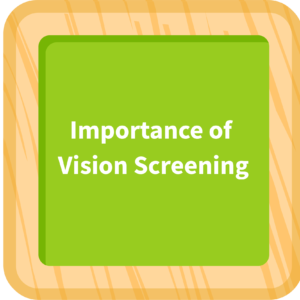
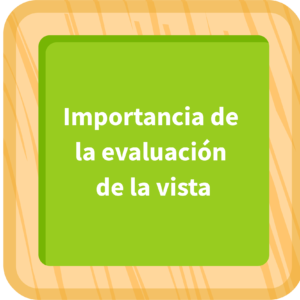
Importance of Vision Screening
The Difference Between Vision Screening and an Eye Examination
The Importance of Vision Screening
Association Between Vision and Learning
Vision and Classroom Behaviors
Additional Resources
10 Steps from Vision Screening to Eye Exam
Vision Screening is Key to Healthy Development
Diferencia entre una evaluación de la vista y un examen ocular
La importancia de la evaluación de la vista
Asociación entre visión y aprendizaje
Los comportamientos en el aula pueden estar relacionados con la mala visión
Additional Resources
Diez pasos pequeños desde la evaluación de la vista hasta el examen ocular
¡La Evaluación de la vista es clave para un desarrollo saludable!
Ejemplos de herramientas de cribado basadas en evidencia
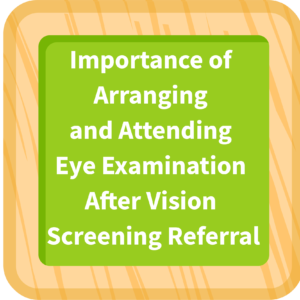
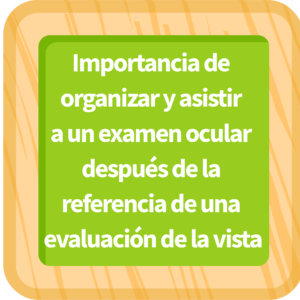
The Importance of Arranging and Attending Eye Examination After Vision Screening Referral
Difference Between Vision Screening and an Eye Examination
Importance of Eye Examination after Vision Screening Referral
What Happens at an Eye Examination?
Association Between Vision and Learning
Vision and Classroom Behaviors
Additional Resources
10 Steps from Vision Screening to Eye Exam
Diferencia entre una evaluación de la vista y un examen ocular
¿Qué pasará en el examen ocular pediátrico?
Asociación entre visión y aprendizaje
Los comportamientos en el aula pueden estar relacionados con la mala visión
Additional Resources
Diez pasos pequeños desde la evaluación de la vista hasta el examen ocular
La Ley de Asistencia Asequible y los ojos de su hijo
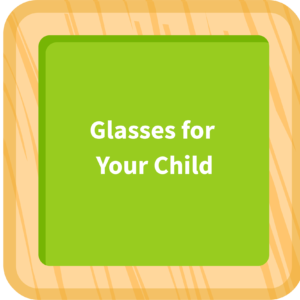
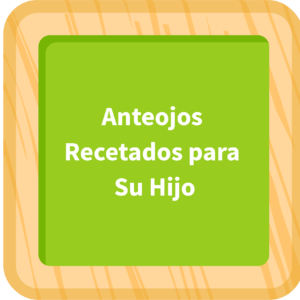
Glasses for Your Child
When you receive a referral from a vision screening and you take your child for an eye examination, your child may receive new prescription eyeglasses as part of the eye doctor’s treatment plan.
Or, your child may already wear prescription glasses.
This section of Small Steps for Big Vision includes information about:
- The importance of wearing prescription eyeglasses
- How to handle new prescription eyeglasses
- Questions to ask your child about the new eyeglasses
- Tips for adjusting to the new eyeglasses
- Tips for taking care of the new eyeglasses
- FAQs about the new eyeglasses, including links to assistance with getting the glasses
- A story book about eyeglasses
- 15 books about children wearing eyeglasses
Resources to Download
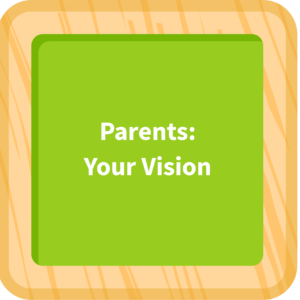
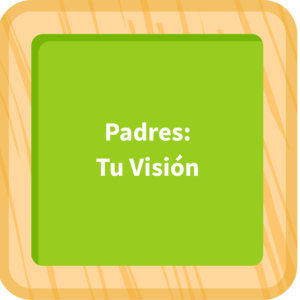
Taking Care of Your Own Vision and Eye Health (pdf)
Padres, tutores, cuidadores: Cuidarse su propia visión (pdf)
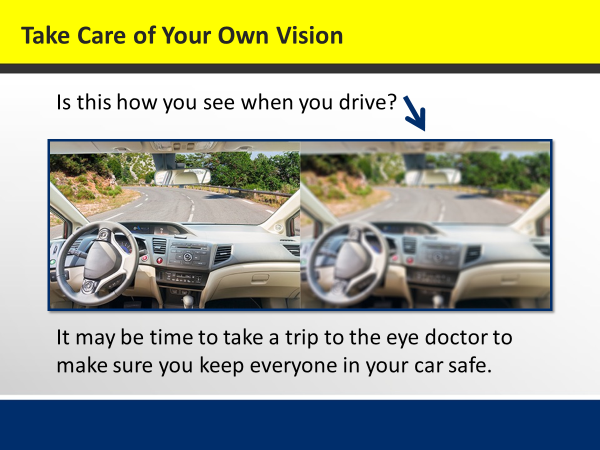
Find links to many topics on this page to help you care for your own vision and eye health.
Topics
- Finding an eye doctor for your child and yourself – Your Child’s Sight – Taking Your Child to the Eye Doctor – at Prevent Blindness – Use the Optometrist or Ophthalmologist links
- For information from pregnancy and your vision, safe use of eye cosmetics, smoking and your vision, to ensuring your eye health, to adult eye diseases and conditions, and vision care financial assistance, visit the Fact Sheet resource page of Prevent Blindness
- Links to common vision and eye health terms, sort of like a dictionary of vision words.
- Prevent Blindness Glossary – https://preventblindness.org/glossary/
- Eye Terms & Conditions from the American Association for Pediatric Ophthalmology and Strabismus – https://aapos.org/patients/eye-terms
- You may also find this link to Common Eye Myths about your sight fun and interesting.
Resources to Download


Videos and Webcasts
Here you will find videos and webcasts about early childhood vision conditions, how the eyes work, and what to expect at a pediatric eye exam.
For more information on the eyes and how we see, visit “The Eye & How We See” at Prevent Blindness. https://preventblindness.org/eye-how-we-see/ A video from the National Eye Institute, called “The Visual System: How Your Eyes Work” is available at: https://youtu.be/i3_n3Ibfn1c
Early Childhood Vision Conditions:
Amblyopia:
- What is Amblyopia? – American Academy of Ophthalmology – https://www.youtube.com/watch?v=fI9P7NU98EE&feature=youtu.be
- Amblyopia, Causes, Signs and Symptoms, Diagnosis and Treatment – Medical Centric – https://www.youtube.com/watch?v=eLbmk1Go8YQ&feature=youtu.be
- Amblyopia – American Association for Pediatric Ophthalmology and Strabismus – https://www.youtube.com/watch?v=_wMs-W515XA&feature=youtu.be
Strabismus:
- Strabismus – American Association for Pediatric Ophthalmology and Strabismus – https://www.youtube.com/watch?v=993C_P00_y4&feature=youtu.be
- What is Strabismus? – American Academy of Ophthalmology – https://www.youtube.com/watch?v=CAiawXTk3Zo&feature=youtu.be
How the Eyes Work:
- The Visual System: How Your Eyes Work – National Eye Institute – https://youtu.be/i3_n3Ibfn1c
- Learn About Eye Health – NEI for Kids – National Eye Institute – https://www.nei.nih.gov/learn-about-eye-health/nei-for-kids
What to Expect at a Pediatric Eye Examination:
- What to Expect at the Pediatric Ophthalmologist. Video from the American Association for Pediatric Ophthalmology and Strabismus (AAPOS) – https://www.youtube.com/watch?v=v7UCn6npC20&feature=youtu.be
- Your Child’s Eye Exam – Dr. Tracey Strombeck. Video from Prevent Blindness Wisconsin – https://www.youtube.com/watch?v=ebzOAI9mjug
Aquí encontrará videos y transmisiones por Internet sobre las afecciones de la vista en la primera infancia, cómo funcionan los ojos y qué esperar en un examen de la vista pediátrico.
Para obtener más información sobre los ojos y cómo vemos, visite “The Eye & How We See” a Prevent Blindness. https://preventblindness.org/eye-how-we-see/ Un video del National Eye Institute, llamado “The Visual System: How Your Eyes Work” esta disponible a: https://youtu.be/i3_n3Ibfn1c
Condiciones de la vista en la primera infancia:
Ambliopía:
- ¿Qué es la ambliopía? – American Academy of Ophthalmology – https://www.youtube.com/watch?v=fI9P7NU98EE&feature=youtu.be
- Ambliopía, causas, signos y síntomas, diagnóstico y tratamiento – Medical Centric – https://www.youtube.com/watch?v=eLbmk1Go8YQ&feature=youtu.be
- Ambliopía – American Association for Pediatric Ophthalmology and Strabismus – https://www.youtube.com/watch?v=_wMs-W515XA&feature=youtu.be
Estrabismo:
- Estrabismo – American Association for Pediatric Ophthalmology and Strabismus – https://www.youtube.com/watch?v=993C_P00_y4&feature=youtu.be
- ¿Qué es el estrabismo?– American Academy of Ophthalmology – https://www.youtube.com/watch?v=CAiawXTk3Zo&feature=youtu.be
Cómo funcionan los ojos:
- El sistema visual: cómo funcionan sus ojos – National Eye Institute – https://youtu.be/i3_n3Ibfn1c
- Aprenda sobre la salud ocular – NEI for Kids – National Eye Institute – https://www.nei.nih.gov/learn-about-eye-health/nei-for-kids
Qué esperar en un examen ocular pediátrico:
- Qué puede esperar en el oftalmólogo pediátrico. Video de the American Association for Pediatric Ophthalmology and Strabismus (AAPOS) – https://www.youtube.com/watch?v=v7UCn6npC20&feature=youtu.be
- El examen ocular de su hijo – Dr. Tracey Strombeck. Video from Prevent Blindness Wisconsin – https://www.youtube.com/watch?v=ebzOAI9mjug
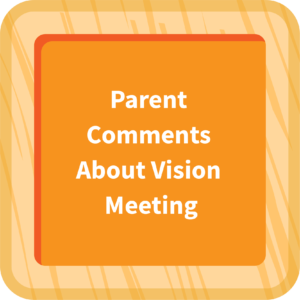
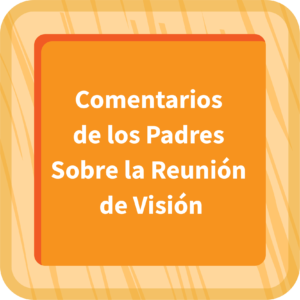
Parent Comments about Vision Meeting
Parents/guardians/caregivers attended vision meetings or vision socials provided by the 5 Head Start pilot sites to help create the Small Steps for Big Vision: An Eye Health Information Tool Kit for Parents and Caregivers. Their evaluations played a huge role in creating and revision this tool kit for parents, guardians, and caregivers across the United States and in other countries.
This section includes comments from a few of those parents, as well as a video of a Head Start parent attending one of the meetings.
Thank you for letting us know how you feel the materials in the tool kit are helpful for you.
Please complete this very short survey
Thank you Delta Gamma Foundation for sponsoring the distribution of printed copies of materials from the tool kit!
Small Steps Webinar, October 20, 2020
Published in October, 2020
If you are adapting information from the Small Steps for Big Vision tool kit, please use the following language and citation:
- Text: Adapted from “Small Steps for Big Vision: An Eye Health Information Tool Kit for Parents and Caregivers”.
- Citation: National Center for Children’s Vision and Eye Health at Prevent Blindness (2020). Small steps for big vision: An eye health information tool kit for parents and caregivers. https://nationalcenter.preventblindness.org/small-steps-for-big-vision/
